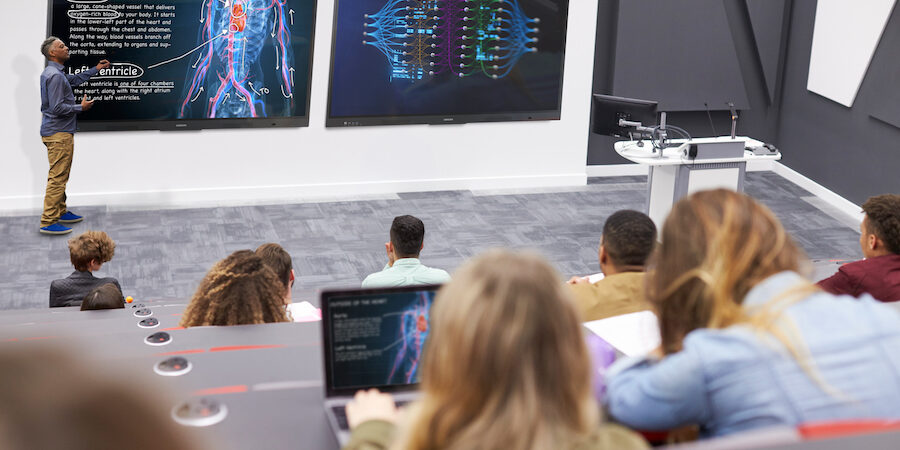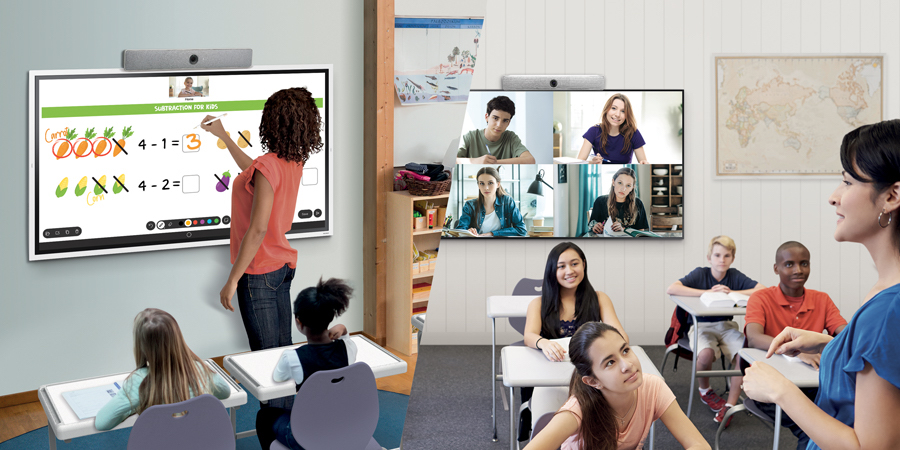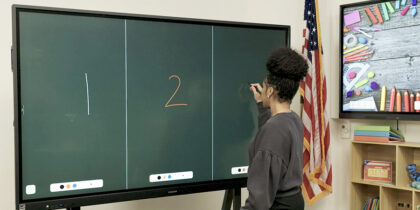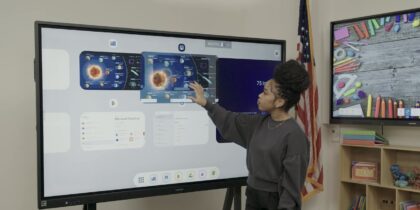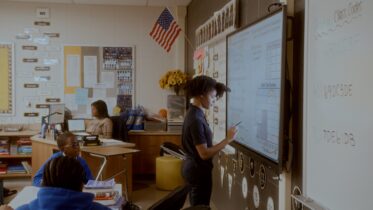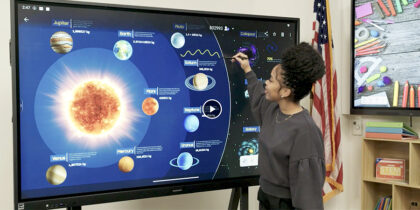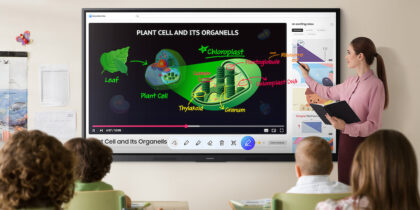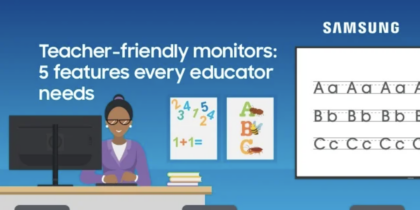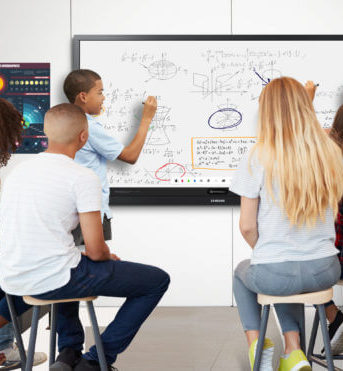Assistive technology has become essential in the modern classroom, supporting diverse learning needs and fostering an inclusive environment.
In the U.S., 7.5 million students between the ages of 3 and 21 fell under the Individuals with Disabilities Education Act during the 2022–2023 school year — about 15% of all public school students. These children were diagnosed with learning and attention disorders, including dyslexia and attention deficit hyperactivity disorder (ADHD).
Meanwhile, about 10.6% of all public school students are learning English as a second language, adding more complexity to learning environments. As school districts and teachers choose their classroom technology, there’s no question they need to be mindful of students’ varying abilities and needs.
To serve their students better, many districts are implementing assistive or adaptive technology in the classroom, such as interactive whiteboards, which allow teachers to create a more comfortable, effective and inclusive learning environment for all students.
How to use a smart board in the classroom
Educators must consider several factors, including budgets, in evaluating which technologies are best to create an ecosystem that enhances learning. As education budgets are often limited, classroom technology should ideally serve multiple functions whenever possible. While every school would love to implement one-to-one classroom computing and purchase learning tools for each student, multipurpose group learning tools often fit more easily into a budget.
Blended learning without limits
Simple, scalable and secure display solutions empower educators to take control of curriculum. Download Now
Integrating any new classroom technology into the existing class structure and lesson plans is also a good idea. Teachers can make adjustments, of course, but they shouldn’t have to completely rearrange their well-developed plans to work with new technology. Along the same lines, the technology should be easy to use for teachers and students alike, without the need for significant training.
A smart board or interactive whiteboard, such as one of the three in the Samsung WAF Interactive Display Series, resembles a traditional dry-erase board in form and use. But unlike a static whiteboard, a smart board can connect with external devices such as tablets, smartphones, laptops and computers. The surface also acts as a large touchscreen that can be written on with a stylus or finger. WAF supports up to 40 simultaneous touchpoints, facilitating collaboration among groups of students.
How interactive displays embrace diverse student abilities
When it comes to assistive technology in the classroom, smart boards like those in the Samsung WAF Interactive Display Series are a proven solution. They can benefit kids with learning or cognitive disabilities, including hearing, vision and mobility differences.
Students with vision challenges, for instance, may have an easier time reading from an interactive whiteboard, as the text can be made bigger, highlighted and bolded. Teachers can also supplement with audio, so students can listen to their lessons rather than having to see across the room. This is especially useful for children who have dyslexia or otherwise struggle with reading.
The Samsung WAF Interactive Display also boasts a split-screen feature that allows teachers to display visual content, such as images or video, alongside text. Children who learn better by reading and listening can benefit from a special feature of the WAF Series — Annotate On — that lets users take notes any time with a simple press of the always-visible Annotation button. Whether watching a video or viewing content, users can seamlessly annotate without interruptions, enhancing productivity by avoiding the need to capture images first.
Assistive classroom technology can also help students who have fine motor challenges. With the option to write with their finger, a stylus or even a tennis ball, each student can use a tool that’s comfortable for them. For instance, they can practice tracing letters and numbers displayed on the board in various sizes. And with handwriting-to-text conversion, students who can’t type on a keyboard can easily write longer-form assignments. And since the EDLA-certified WAF Series supports Google Play, YouTube and other Google services for heightened communication with students, there’s little to no learning curve in the classroom.
Students with attention disorders may have an easier time focusing on a single screen, which minimizes distractions. These students will often also benefit from assistive technology for ADHD in the classroom as well as lessons that incorporate video, graphics and sound clips — which is easy for teachers to do on a smart board and helps students stay engaged.
How interactive displays support ELL students
An interactive whiteboard can also help teachers make lessons inclusive for English language learners (ELLs). If an ELL doesn’t know what a word means, for example, the teacher can use technology tools to pull up a photo and description on the board and show them what it is immediately.
Teachers can take advantage of numerous tools on the WAF Series to support students’ understanding, including Circle to Search with Google, which can be used to quickly search images and words. Just circle the image or text, and additional resources, such as translations or definitions, will appear in a pop-up window.
English language students can also access language lessons right on the screen and follow along by listening to lessons in their preferred language.
Inclusive technology for all
When it comes to teaching, there’s no one-size-fits-all solution, but interactive whiteboards come close. Simple to implement and user-friendly, this adaptive technology empowers students of diverse abilities to actively participate in the classroom, helping them thrive and reach their full potential.
Find out more about enhancing learning with Samsung EDLA-certified interactive whiteboards for classrooms. Also, explore a full range of Samsung technology, especially the new Samsung WAF Interactive Display Series, designed for intuitive and exciting collaboration.
